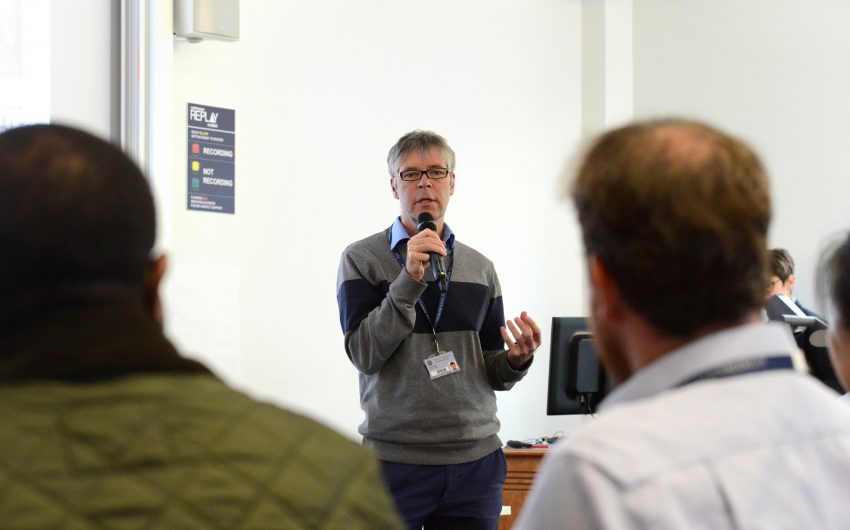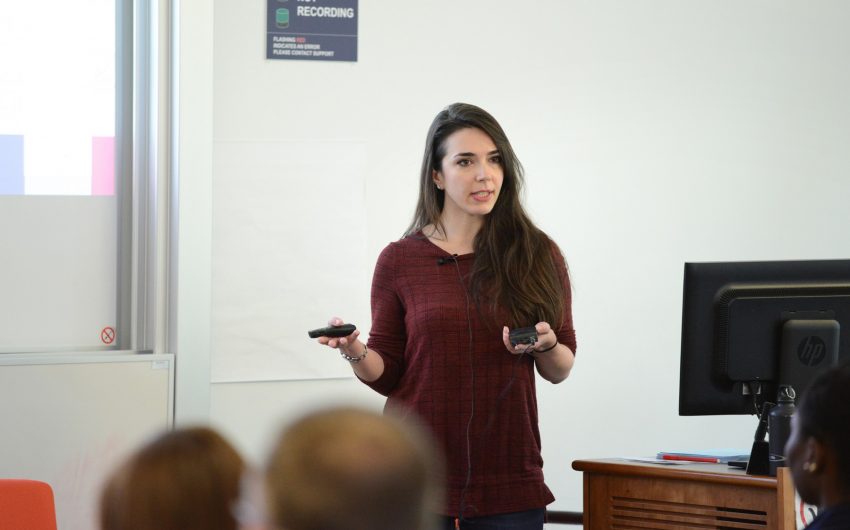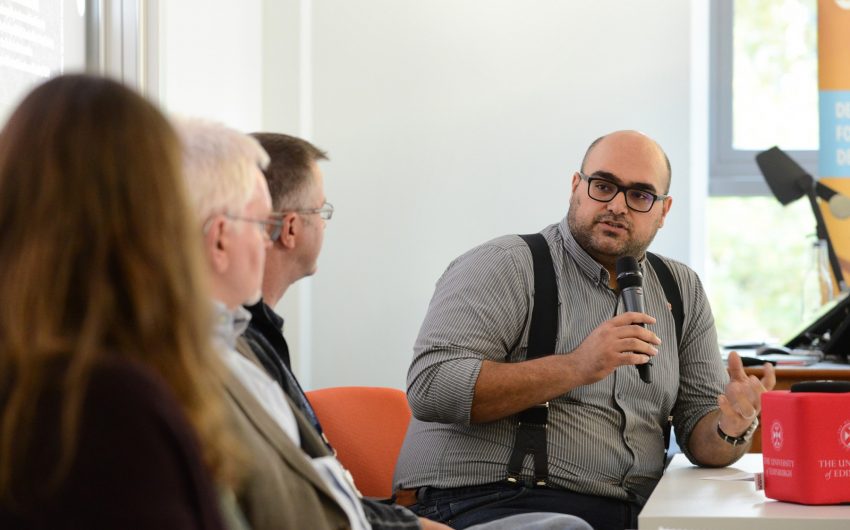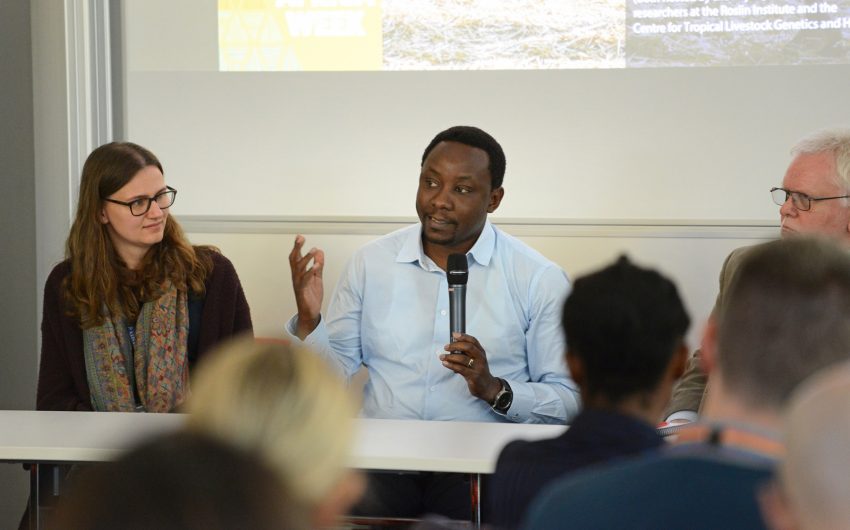Livestock are the mainstay of livelihoods across the developing world. The energy and nutrient-dense milk, meat and eggs these animals produce provide the millions of smallholder farming families with livelihoods, incomes, food and nutrition.
Research plays an important role in sustainably developing this sector. Working collaboratively with other scientists around the world, researchers from Edinburgh are striving to develop more resilient and profitable livestock systems in Africa and other low- to middle-income countries to reduce poverty, hunger and malnutrition in rural communities.
At the end of October, “Agri-Food Transformations for Africa: working together for impact” brought scientists from CTLGH, the University of Edinburgh and other Edinburgh based research bodies together to share their scientific innovations and discuss pathways for progress.
More than 50 researchers participated in the event, representing the work of CTLGH as well as The Roslin Institute, The Royal (Dick) School of Veterinary Studies, Supporting Evidence-Based Interventions (SEBI), the Global Academy of Agriculture and Food Security, Scotland’s Rural College (SRUC) and the International Veterinary Vaccinology Network (IVVN).
Flash Talks highlight innovative research
Projects by CTLGH researchers based at all three of its partner organisations; the Roslin Institute, Scotland’s Rural College (SRUC) and the International Livestock Research Institute (ILRI), were highlighted at the event in a series of flash talks.

Oluyinka Opoola, who is based at the Roslin Institute, spoke about the CTLGH project she is co-ordinating to develop a profit index help maximise dairy outputs and income for dairy farmers in Rwanda. “Rwandan dairy farmers prefer a small hardy cow that produces a calf, has high milk yields and is cheap to feed,” she explained.
Rwanda has selected the Jersey as its preferred breed to support the development of the country’s dairy industry due to its suitability to low-input farming systems. The project, undertaken in collaboration with Rwanda’s Agriculture and Animal Resources Development Board and funded by Jersey Overseas Aid, aims to develop a dairy profit index tailored for Rwanda, tailored for the Jersey breed, which will support the future profit led management decisions by Rwandan smallholder dairy farmers.

Emily Clark from CTLGH and the Roslin Institute, also presented the “Million bucks” strategy for delivering transformative goat breeding technologies. Together with Mike Coffey from SRUC, this work aims to overcome traditional barriers to distributing ‘elite’ genetics in small ruminants. By using a combination of modern reproductive technologies, e.g. artificial insemination, embryo transfer or semen sexing, and a surrogate sire system this initiative distributes thousands of donor ‘elite’ bucks directly into the existing infrastructure. This approach ‘leapfrogs’ the need to establish costly new breeding infrastructure, and directly disseminates ‘elite’ genetics without social disruption.
While there are many options for feed livestock, it’s not always clear which ones are locally appropriate or feasible. Alan Duncan from the Global Academy and ILRI showcased work on mapping the feasibility of different livestock feed options in Africa, to better match technical feed options with the local context. The work, which is a collaboration with the International Centre for Tropical Agriculture (CIAT) and ILRI, aims to stimulate the adoption of better feed options at scale in order to transform livestock productivity and hence livelihoods and human nutrition outcomes.
The CTLGH researchers were joined by others working on a wide range of innovations to address different areas of the food system. Theodora Tsouloufi from SEBI shared her work on innovative evidence maps on livestock disease and mortality in Ethiopia and Ross Houston from the Roslin Institute highlighted his work applying genomic tools to improve Nile Tilapia, one of the world’s most important food fish, in African aquaculture.
Increasing knowledge exchange and collaboration
A lively panel discussion followed, where panellists Thumbi Mwangi from Washington State University College of Veterinary Medicine and representatives from CTLGH, The Roslin Institute, SEBI reflected on the innovations presented and discussed possible ways forward with the audience.
The panel agreed that although great progress had been made, there was still a lot of work to be done in terms of advancing livestock innovations in the African context. CTLGH researcher Oswald Matika pointed out that crop research has made a significant improvement to crop production systems in Africa and that livestock innovations have the potential to make as big an impact to the livestock industry. His thoughts were mirrored by CTLGH researcher Liam Morrison from the Roslin Institute who noted that improved tools and technologies for understanding Trypanosomiasis are a huge source of optimism for improving livestock health in Africa.

“I am delighted with the number of attendees at today’s event,” said Eleanor Riley, Director of the Roslin Institute and one of CTLGH’s three Principals.
“I think it reflects the large and increasing volume of activity and research that we are undertaking on this campus to improve food security in Africa.”
The “Agri-Food Transformations for Africa: working together for impact” was organised as part of Africa Week, which celebrates the University’s links across Africa. The objective of the event was to improve integration among scientists currently working, or keen to begin working, in Africa to enable sharing, collaboration and collective impact. Those who attended agreed that the event was a good step towards facilitating knowledge exchange and collaboration among researchers wanting to support the rural communities in Africa that rely on livestock for their livelihoods.
Future events will be scheduled in the future.










